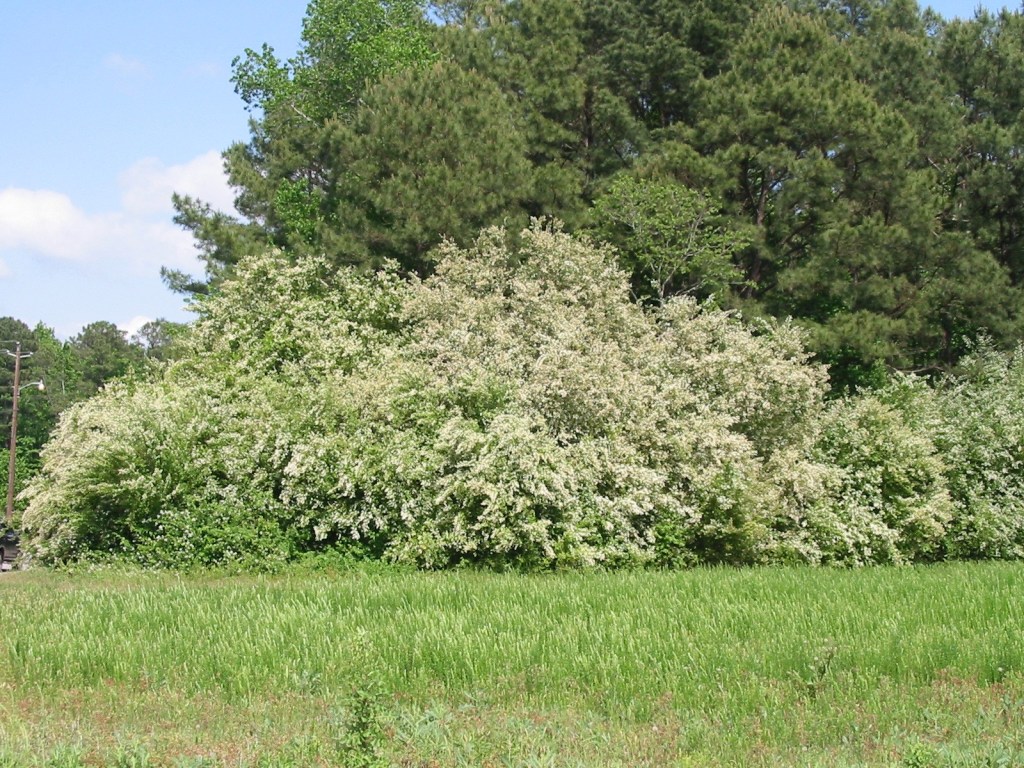The Home & Garden Spot — Chinese Privet: The hedge that took over Alabama
Published 9:00 am Wednesday, November 16, 2016

- Recent studies have found Chinese privet may prevent hardwood regeneration as it forms dense shade that hardwood seedlings cannot tolerate.
As the fall season marches towards winter, Chinese privet (Ligustrum sinense) really stands out along pasture fence lines, forest edges and throughout dormant bottomland hardwoods. Cattle readily graze the leaves they can reach and new seedlings that emerge each spring.
In abandoned pastures, privet will invade alongside many other woody species and can be a problem during renovation. Chinese privet is found on about one million acres of private land in Alabama and untold acres along roadsides and right of ways.
It was introduced from Southeast Asia around 1852 and has been widely used as an ornamental throughout the Southeastern U.S., especially since the 1950s.
Chinese privet is a single to multi-stemmed shrub with dark green opposite leaves that persist throughout the year. Dense clusters of small white flowers are produced each spring and dark blue fruits mature in the fall and persist into the winter.
Privet reproduces by seed and by shallow, creeping lateral roots that produce sprouts, forming dense thickets. The seeds readily germinate after passing through birds and other animals, but most do not remain viable for more than a year.
Chinese privet can have some positive impacts. Beekeepers widely use it as a source of nectar each spring during flowering. Many birds consume the dark blue fleshy fruits over the winter when other fruits are less abundant and deer use it for cover and feed on the leaves.
While those aspects can be appreciated, Chinese privet is also showing indications of its true cost outweighing these benefits in Alabama forests.
Recent studies have found Chinese privet may prevent hardwood regeneration as it forms dense shade that hardwood seedlings cannot tolerate. And anyone who’s battled Chinese Privet in their fencerows knows what a challenge it is.
As with most invasive weeds, control of privet is a multistep program that requires persistence for success. Any mechanical control methods generally stimulate more privet growth, whether by bulldozer, chain saw, bush hog or brush mulcher.
Cattle will graze the sprouts and leaves. Prescribed fire will kill privet seedlings, but is not feasible in most areas.
Privet control with herbicides is the clear option. First, most pasture herbicides are very weak on privet or provide inconsistent control at best.
On fencerows where overspray into pastures can be avoided and around hardwood stands, glyphosate is the most effective herbicides for privet control. Use a 3-5 percent solution of a glyphosate product containing at least 41 percent active ingredient with a good surfactant.
The timing on this treatment is not summer, but late fall (December). At this time, hardwoods are dormant and will not be injured by glyphosate.
This treatment is not as effective in the summer and there is greater chance of injury to actively growing trees.
Good coverage is critical but can be difficult to achieve when the privet foliage is extremely thick. This treatment is effective into the early winter as long as day temperatures reach the 50s and colder conditions do not persist.
When using this approach, be patient after application. Privet is slow to die, but it will succumb to the treatment over a few months.
Privet can also be controlled with the cut stump treatment method. In this case, research at Auburn University has shown that a 25 percent solution of a glyphosate product with a minimum 41 percent active ingredient applied to the surface of the stump immediately after cutting is very effective.
With glyphosate, minutes count and the faster you treat after cutting the better. This treatment is very labor intensive, but extremely effective.
One final approach that is also very effective is a basal bark treatment with a triclopyr ester herbicide such as Remedy. For this approach, a 20 percent solution of the herbicide is mixed in an oil carrier such as diesel fuel or a basal bark oil.
Spray the mix on the bottom 12 to 15 inches of each stem, all the way around. This is easy to do on single-stemmed, widely spaced privet shrubs, but difficult in dense privet growing along fencerows.
For more information on control of Chinese privet, contact the Limestone County Extension Office at 256-232-5510 and request publication ANR- 1468, Control Options for Chinese Privet.
This publication can also be downloaded at this link: http://www.aces.edu/pubs/docs/A/ANR-1468/ANR-1468.pdf.
The Limestone County Extension Office is located at 1109 W. Market St. in Athens. Office hours are 8 a.m. – 4:30 p.m. Monday through Friday. For more information, call 256-232-5510 or visit www.aces.edu.




